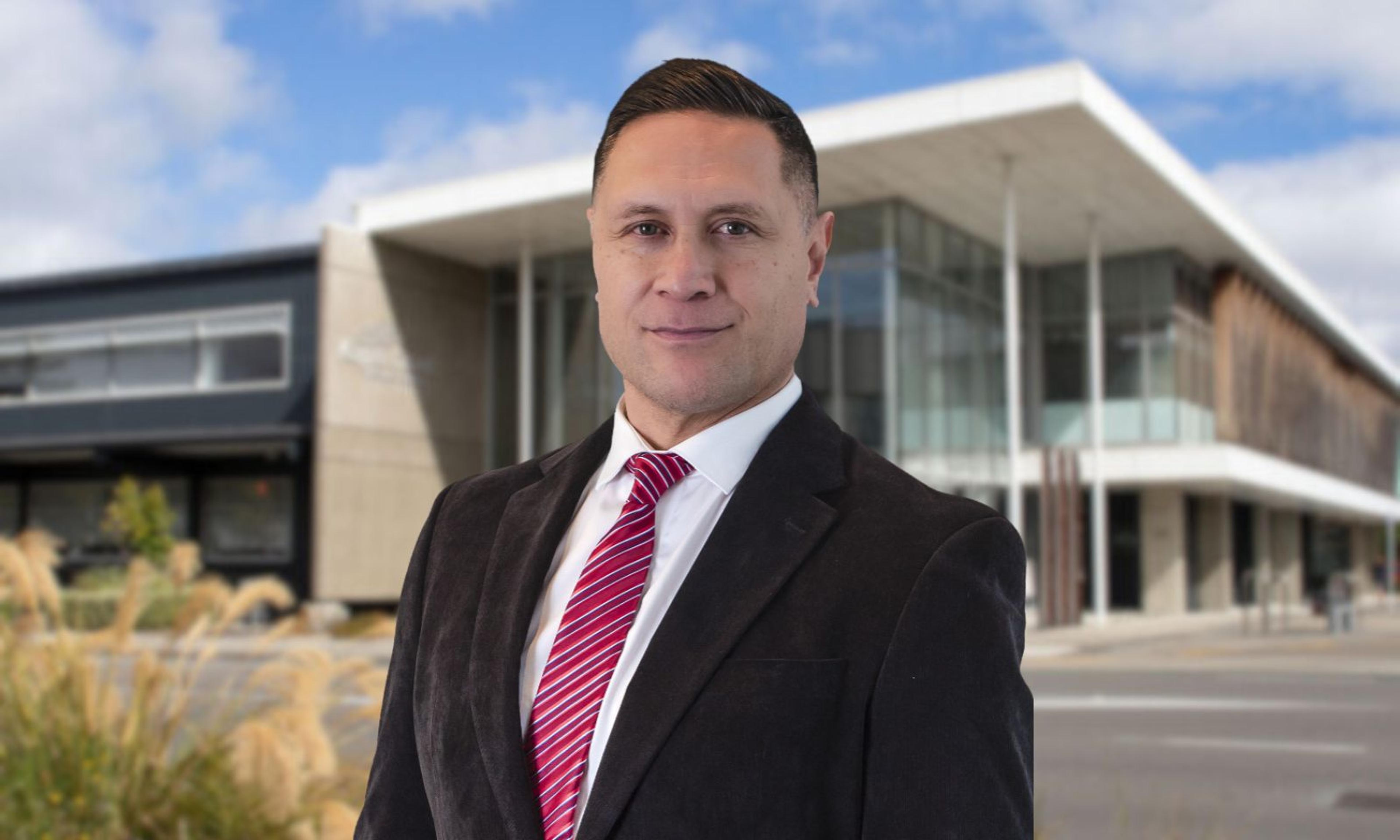
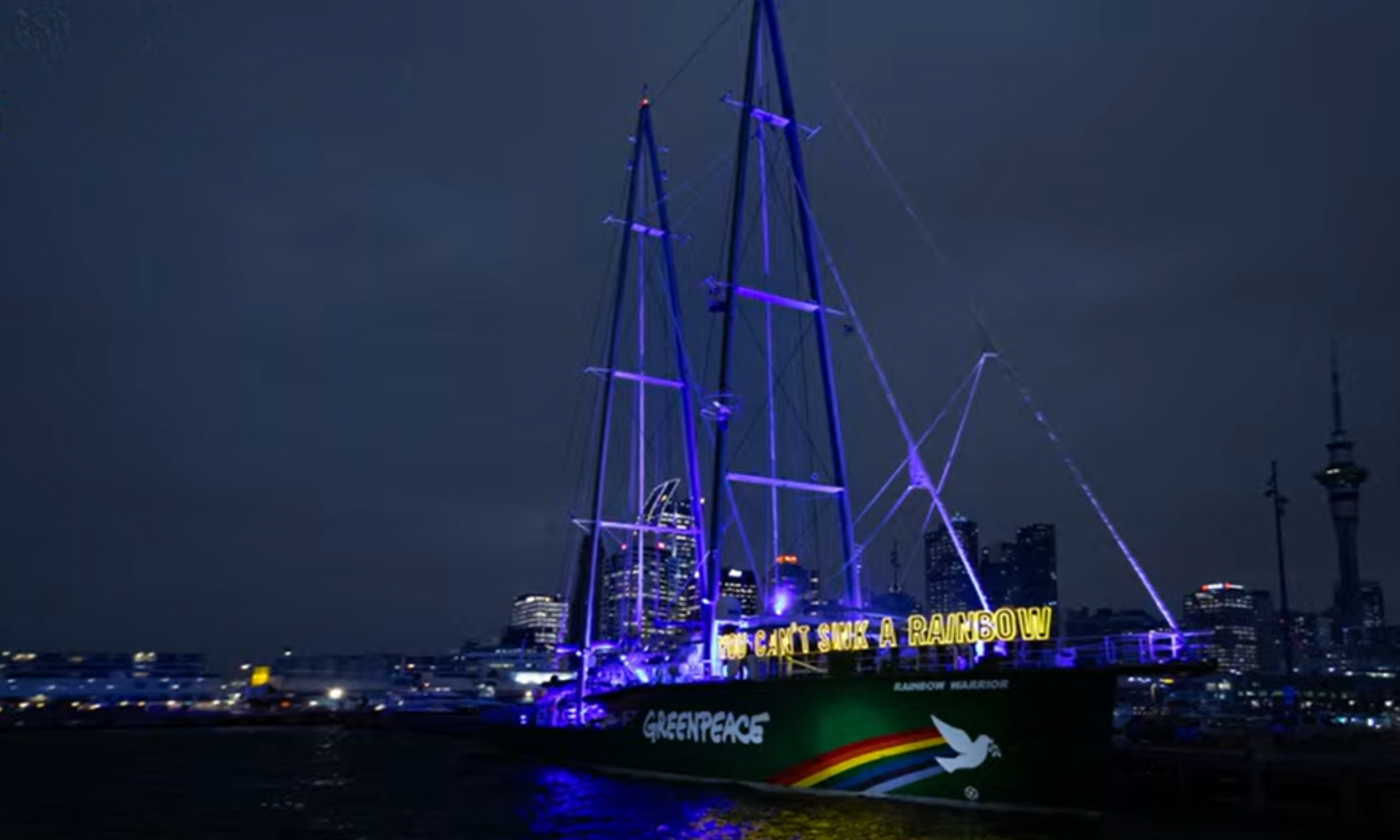
A dawn ceremony marks 40 years since the Rainbow Warrior was bombed.
Photo/Livestream
Dawn ceremony marks anti-nuclear legacy of Rainbow Warrior
Forty years after the bombing of the Rainbow Warrior, the ship is remembered as a symbol of Pacific solidarity against nuclear testing.

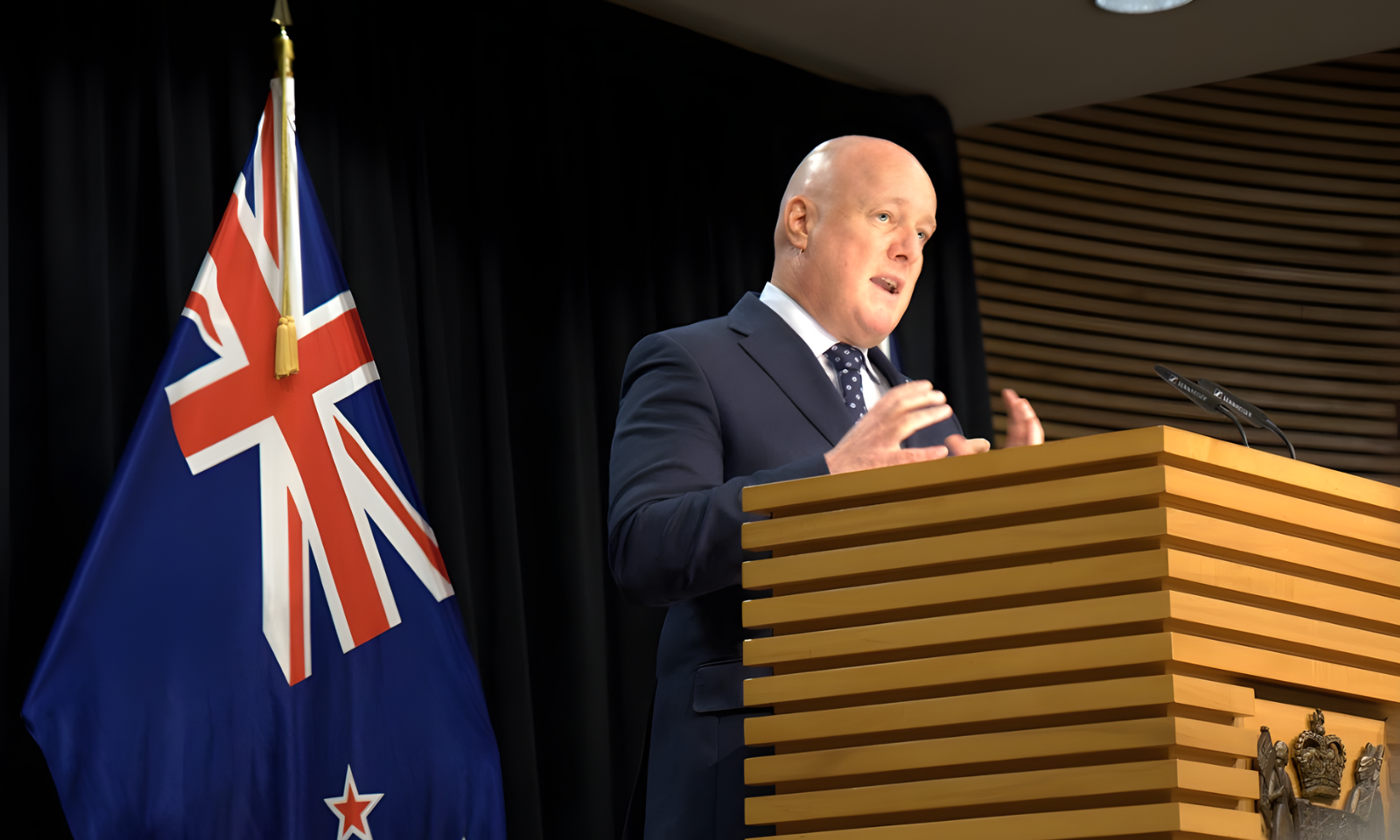
Luxon rules out merging Ministry for Pacific Peoples this term
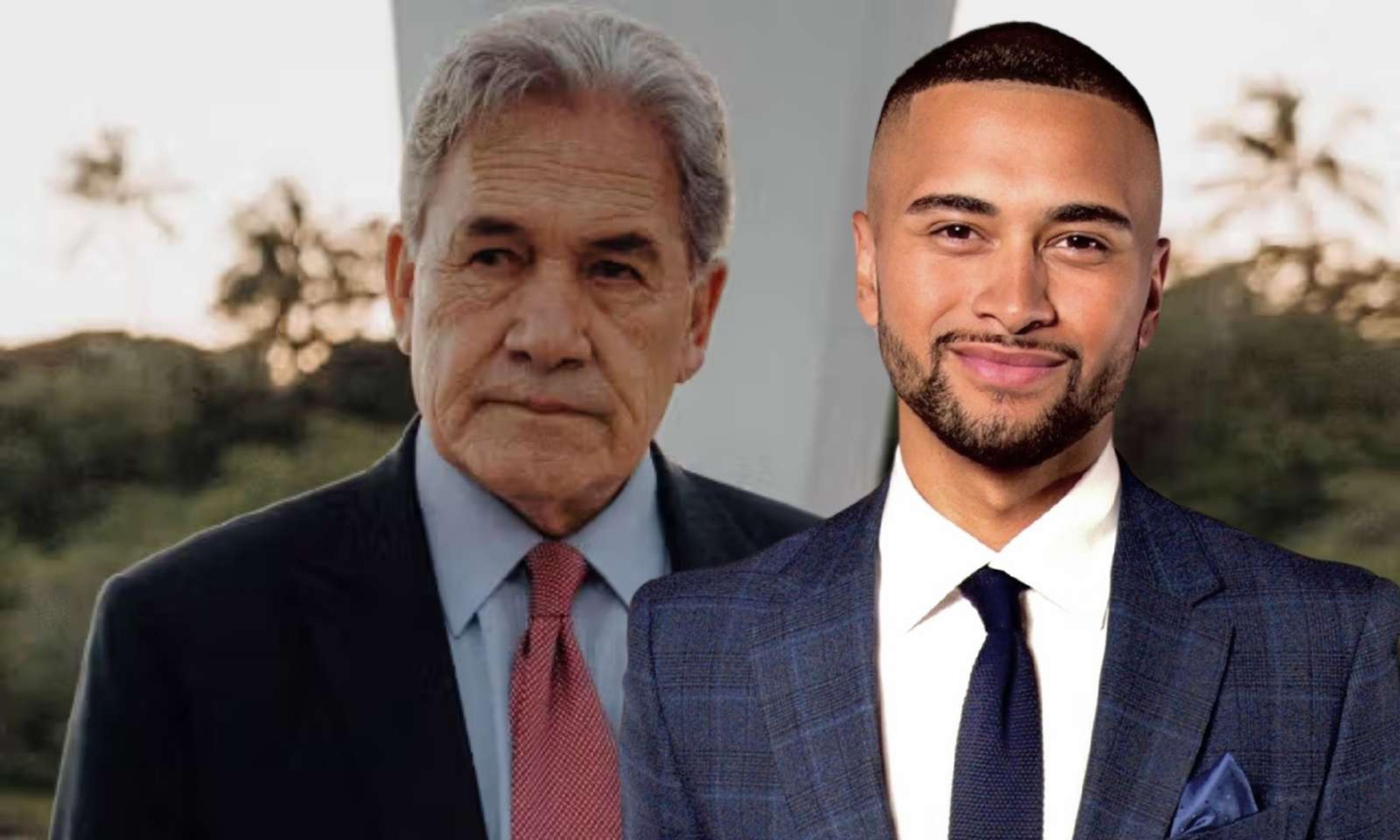
Will’s Word: Winston Peters calls for Pacific-first foreign policy focus

685 to the World: A new digital home for Sāmoan creatives


Luxon rules out merging Ministry for Pacific Peoples this term

Will’s Word: Winston Peters calls for Pacific-first foreign policy focus

685 to the World: A new digital home for Sāmoan creatives
At dawn on Thursday, hundreds gathered at Auckland’s Halsey Street Wharf to commemorate the 40 years since the bombing of the Rainbow Warrior, a defining moment in Aotearoa’s nuclear-free stance and Pacific solidarity.
The ceremony, hosted by mana whenua Ngāti Whātua Ōrākei, marks the deadly French state attack that killed Greenpeace photographer Fernando Pereira and sank the vessel as it prepared to protest nuclear testing in the Pacific.
Russell Norman, executive director of Greenpeace Aotearoa, says that while the bombing sought to crush the dream of a nuclear-free Pacific, it had the opposite effect.
“It is true that they killed Fernando, and it is true that they sunk the Rainbow Warrior, now resting in the north of Aotearoa under the watchful eye of Ngāti Kura at Matauri Bay. But it is not true that they killed our dream,” he says.
“The people of the Pacific, with the support of Greenpeace and people from all over the planet, put an end to nuclear testing in the Pacific. And Aotearoa New Zealand passed nuclear-free legislation to create a nuclear-free zone in our country.”
Watch the Dawn Ceremony livestream below.
Sharon Hawke, spokesperson for Ngāti Whātua Ōrākei, reflects on the intergenerational harm caused by nuclear testing across the Pacific.
“Women giving birth to jelly babies, Tahitian people taken to France and never seen again ... So this nation made a stand and we gave the middle finger to a very powerful nation and said ‘No more. No warships are ever to come into the Waitematā’, and you, the people, have stood by this.”
Addressing those gathered, Hawke says nuclear testing by Britain, the United States, and France affects not only land and sea but also the spirit of Pacific peoples.
“Their land, their Papatūānuku, their Mother Earth, was destroyed in this quest for power and nuclear domination,” she says.
“The hauora of Papatūānuku, Ranginui, and our moana go hand in hand. This is something we must maintain, the versatility, the resilience to say no to people who have an evil intent to destroy our Mother Earth.”
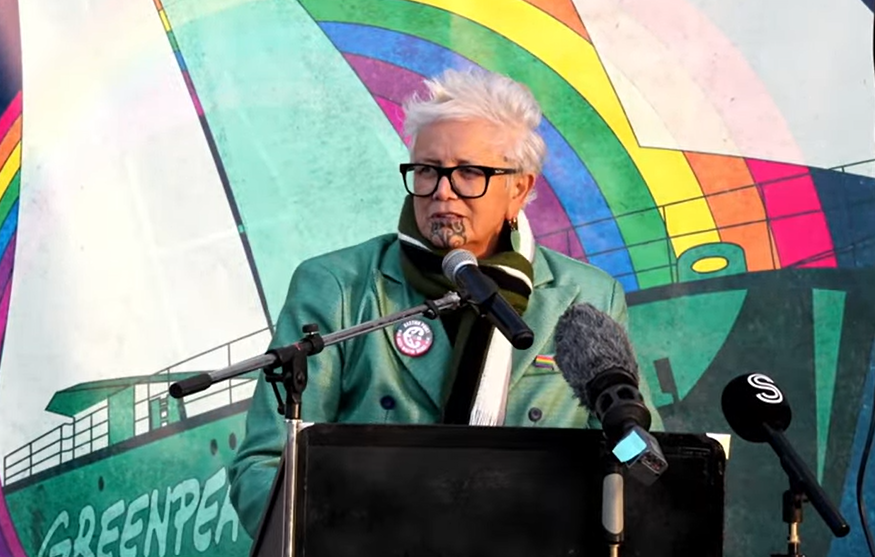
Ngāti Whātua Ōrākei spokesperson Sharon Hawke reflects on Rainbow Warrior's significance in the Pacific region. Photo/Livestream
'Colonisation disguised as development'
For many younger people, the bombing is a distant memory. Greenpeace campaigner Juressa Lee, who was only four years old at the time of the attack and living in Australia, spoke with Sanele Chadwick on Pacific Mornings, about how it takes time to grasp the gravity of what happened.
“These are things I’ve only seen in movies. This terrifying act, a terrorist act, happened right here in Aotearoa, in my lifetime,” Lee says.
“I don't think many people in my children's generation understand the gravity of what happened, but I think their engagement in issues now means there’s a history, there’s a context, and there’s a cautionary lesson there.”
Watch Juressa Lee's full interview below.
Speaking from the wharf beside the third-generation Rainbow Warrior, Lee describes the atmosphere as sombre yet hopeful. She drew strong parallels between the nuclear battles of the past and today’s struggles against deepsea mining, saying that extractive industries continue to be pushed on the Pacific by powerful foreign interests.
“They call our homes barren. They seek to circumvent international rules. They want to turn our taonga into resources, but these things take millions of years to form, and we still know so little about the deep sea.
“We’re being peddled false solutions. We’re being told we’re standing in the way of climate action, but what’s really happening is another wave of colonisation disguised as development.”
Despite the challenges ahead, Lee says Pacific people across generations, from ancient navigation to modern climate leadership.
“We can lead the world. We can change mindsets. And we can protect our future.”